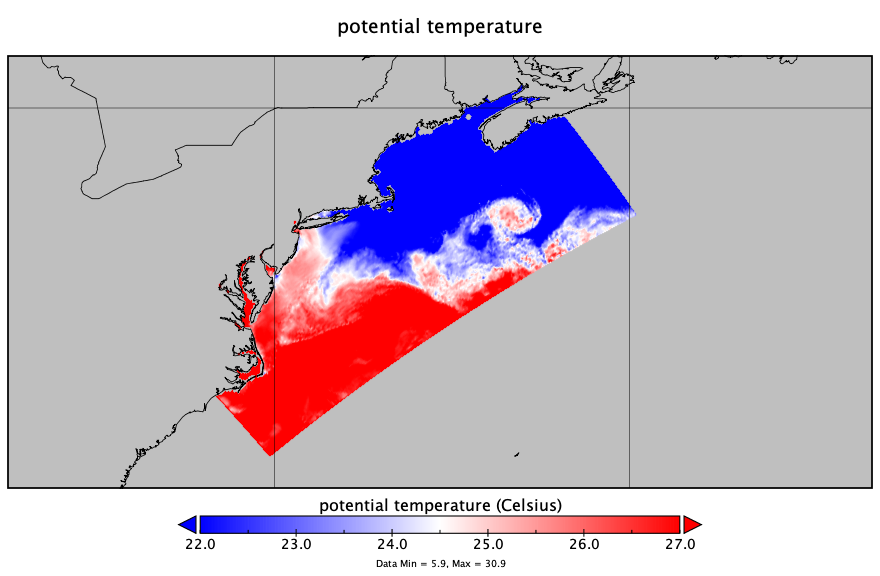-
Coupled Modeling of Fay
Posted on July 12th, 2020 No commentsOver the last year a team at Rutgers has been developing new model coupling capabilities as part of the US IOOS Coastal Ocean Modeling Testbed (COMT) program. In this application we’ve coupled a regional ROMS model, DOPPIO, which covers the Mid-Atlantic Bight (MAB) and Gulf of Maine, and an implementation of the Weather Research and Forecasting (WRF) model. In this coupled system ROMS provides SST to WRF, while WRF calculates heat fluxes and passes back forcing information to ROMS.

The coupled system was initialized on 07/09 00:00 GMT and ran forward 72 hours. In the first SST image from ROMS you can see warm surface waters over the southern portion of the MAB and cooler waters to the north and into the Gulf of Maine. As the storm passes the Atlantic Shores Buoy on 07/10 at 20:00 GMT the next SST image shows the cooling over the entire southern portion of the MAB.

Animations of the latent and sensible heat fluxes from the WRF portion of the coupled model show that both heat fluxes were negative for much of the storm time period. This means that energy was getting sucked out of the atmosphere and into the ocean. This is setup from the cool ocean temperatures underneath a warmer atmosphere, just like we observed in the Hurricane Irene case back in 2011.
Over the next few weeks we’ll be evaluating how the model compares to the observations collected throughout the storm, and performing sensitivities to see how the ocean coupling influenced the storms intensity before landfall. More to come!
Last 5 posts by Travis Miles
- Sally Approaching SG601 - September 13th, 2020
- Michael Gulf of Mexico SST anomaly and ocean response - October 11th, 2018
- Hurricane Michael glider model comparisons for October 9th - October 10th, 2018
- Navy Glider Model Comparisons for Hurricane Michael - October 8th, 2018
- Isothermal shelf waters and Florence - September 14th, 2018



